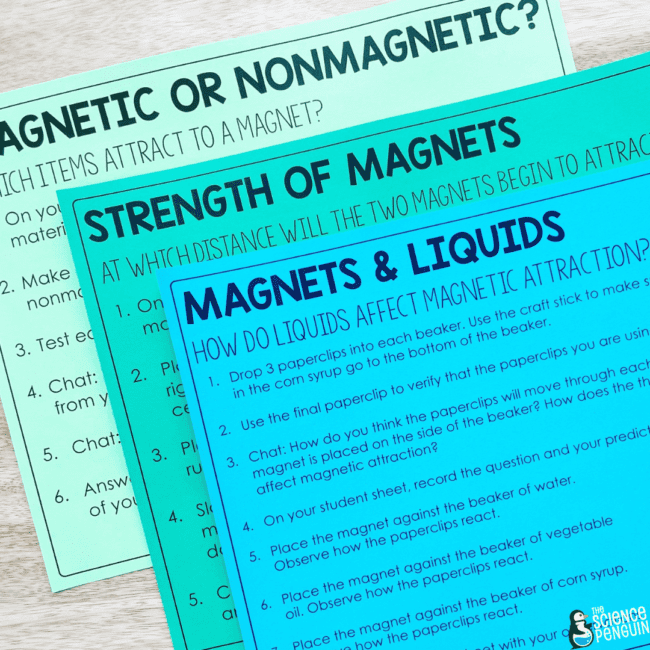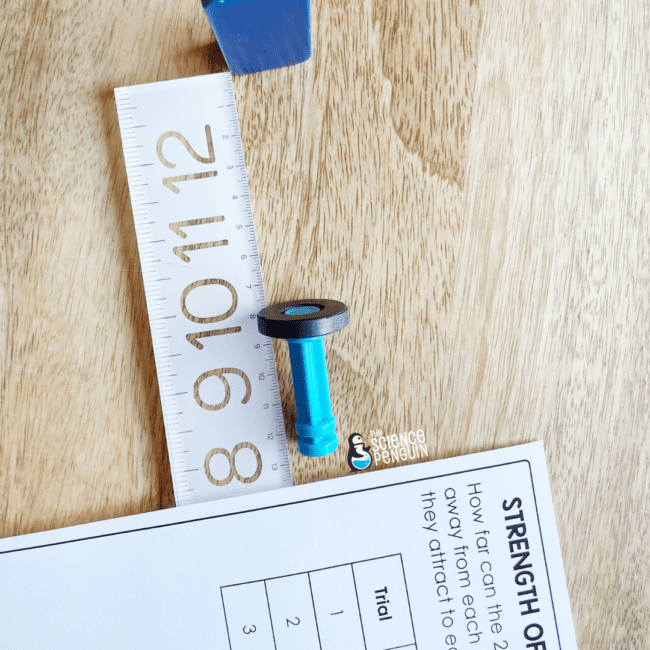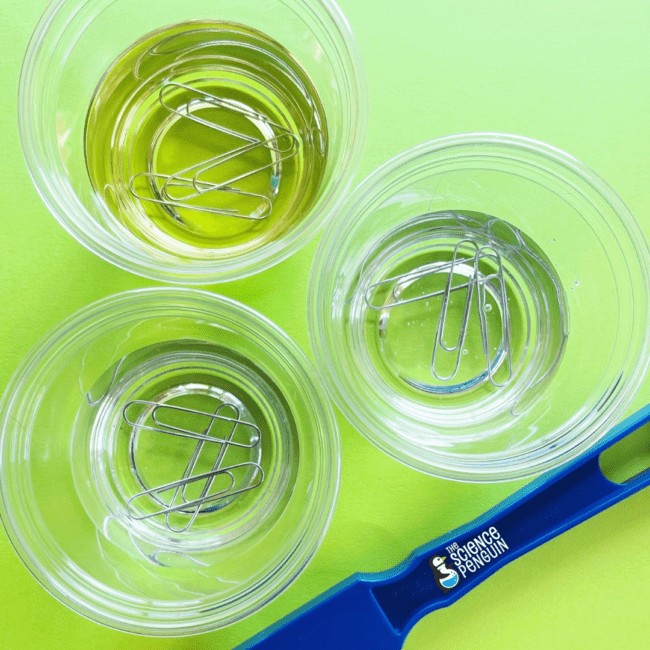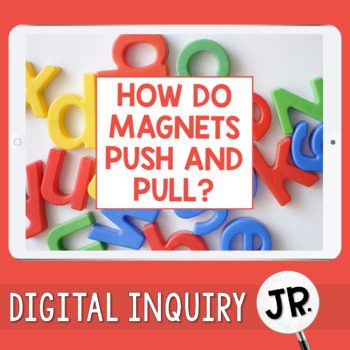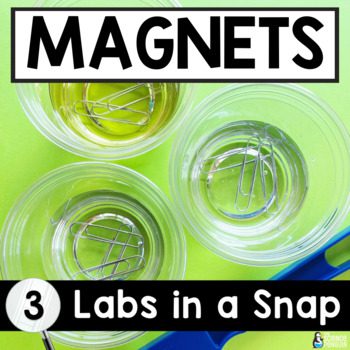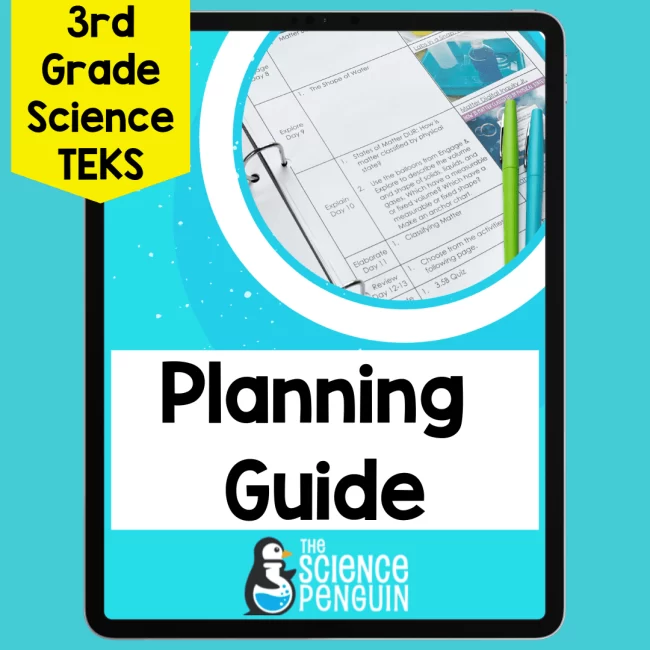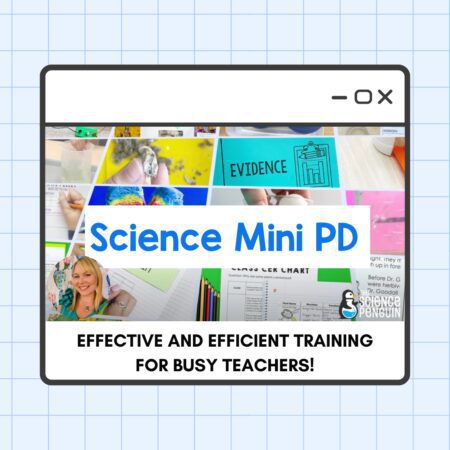
Magnets are so useful. Whether on our fridge, holding up papers on our whiteboard, or in our preschool playrooms, our students are interacting with magnets from a young age. But how do they work!? Here are 5 fun ways to teach about magnets for 3rd grade.
🧲️ 1. Magnetism Labs in a Snap
If you’re following the 5E Model, labs are a great way to Engage your learners with the material before we get into all of the details of magnetism. This lab is great for the Engage stage!
I start off by giving my kids a bin of objects and a magnet. Students then figure out which objects are magnetic and which objects are not magnetic. You can do this on your own with any random objects from your classroom, or you can use our Labs in a Snap resource that has the lab, lesson plans, and student sheets all ready for you!
Magnetism Labs in a Snap also includes two more labs that are suited for the Exploration and Elaboration steps of 5E.
Your students will also enjoy testing the strength of magnets and how liquids impact a magnet’s strength!
🧲️ 2. Magnetic Fields with Iron Filings
Create a hands-on activity where students can visualize magnetic fields using iron filings. Place a bar magnet under a piece of paper and sprinkle iron filings on top. Gently tap the paper to distribute the filings. Students will see the filings align along the magnetic field lines, helping them understand the concept of invisible magnetic fields.
🧲️ 3. Push and Pull
Students in 3rd grade are learning about how force can be a push or a pull, and magnets help to solidify this concept. Magnets Digital Inquiry Jr. is a great way for students to learn how magnets work and how they can both push and pull depending on how they are arranged. Students watch a video, read a text, and listen to an audio recording to help them Explain (5E) how magnets work. Then, students synthesize their learning by creating a diagram and constructing a written response.
🧲️ 4. Magnetic Car Races
Students design a maze on a piece of paper or cardboard with pathways and obstacles. Provide students with a magnetic wand and a small magnet attached to a toy car.
Challenge them to navigate the car through the maze using the attracting and repelling properties of magnets they learned about in the Digital Inquiry Jr. lesson from above.
🧲️ 5. Magnetic or Nonmagnetic?
This is a hands-on experience that doesn’t require actual magnets or objects. Students are given 27 pieces of paper with materials on them- wax, oxygen, and aluminum are examples. They have to figure out if each material is magnetic or nonmagnetic. I usually allow my students to have access to some sort of a resource to do some research (Chromebooks work great) because there are a handful that will require some discussion and critical thinking.
I love to set this up as a relay game, and I’ve detailed how to do that (plus some other gamification options) in the Magnetic or Nonmagnetic Science Sort.
The world of magnets holds endless fascination. These five engaging methods offer a blend of hands-on exploration and interactive learning, ensuring that magnetism becomes more than just a mystery.

